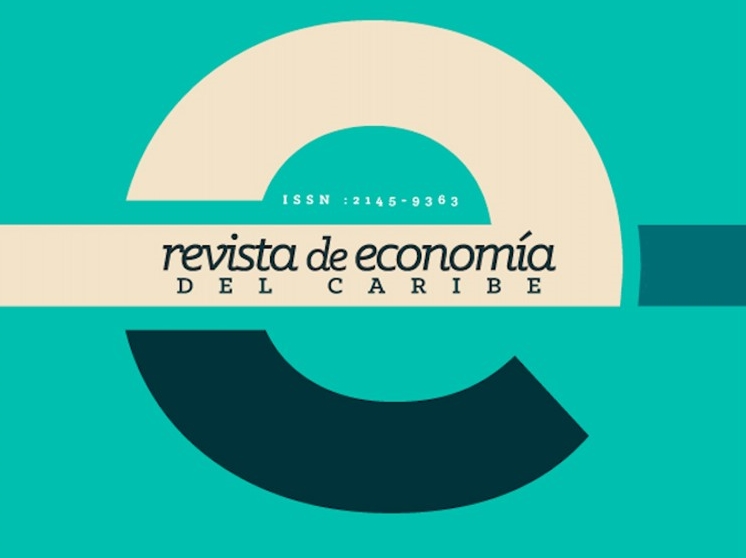Business Expectations and Gender Differences: The Case of SMEs in Panama
Keywords:
SMEs, Entrepreneurship, Business Expectations, Gender DifferencesAbstract
Panama, located at the crossroads of the Americas, has experienced robust economic growth and political stability in recent years, making it an attractive destination for foreign investment. Small and medium-sized enterprises (SMEs) are the backbone of any economy. They contribute significantly to job creation, income generation, and economic growth. In Panama, SMEs play a similar role. Using data from the World Bank, we implement a Tobit Regression Model to analyze the relationship between the business environment and business expectations among SMEs in Panama, and to test the hypothesis that women leaders are more likely to have lower business expectations. We find that women-led firms are more likely to have negative expectations, relative to their counterparts.
References
American Express & Oxford Economics. (2019). SME Pulse 2019: Strategies to boost the
bottom line.
https://www.americanexpress.com/content/dam/amex/nl/business/Documents/AmexOxfor
dEconomics_SME_strategies_2019_WEB.pdf
Biasi, B., & Sarsons, H. (2022). Flexible wages, bargaining, and the gender gap. The
Quarterly Journal of Economics, 137(1), 215–266. https://doi.org/10.1093/qje/qjab042
Blau, F. D., & Kahn, L. M. (2017). The gender wage gap: Extent, trends, and explanations.
Journal of Economic Literature, 55(3), 789–865. https://doi.org/10.1257/jel.20160995
Cepel, M., Stasiukynas, A., Kotásková, A., & Dvorský, J. (2018). Business environment
quality index in the SME segment. Journal of Competitiveness, 10(1), 21–40.
https://doi.org/10.7441/joc.2019.01.02
Cirera, X., Cruz, M., Martins-Neto, A., Kyungmin, L., & Nogueira, C. (2024). The role of
technology in reducing the gender gap in productivity. World Bank Policy Research
Working Paper, 10771.
http://documents.worldbank.org/curated/en/099701005152432429/IDU19d64fdd31725014
bd11a04b1ee26fb7aba61
Child, J., Karmowska, J., & Shenkar, O. (2022). The role of context in SME
internationalization: A review. Journal of World Business, 57(1), Article 101238.
https://doi.org/10.1016/j.jwb.2021.101238
Cicea, C., & Marinescu, P. (2019). Determinants of SMEs’ performance: Evidence from
European countries. Economic Research-Ekonomska Istraživanja, 32(1), 1602–1620.
https://doi.org/10.1080/1331677X.2019.1636699
Croson, R., & Gneezy, U. (2009). Gender differences in preferences. Journal of Economic
Literature, 47(2), 448–474. https://doi.org/10.1257/jel.47.2.448
Easterly, W. (2006). The white man’s burden: Why the West’s efforts to aid the rest have
done so much ill and so little good. Penguin Press.
Eniola, A. A., & Ineba Decster, H. (2022). Entrepreneurship-based SME strategies: The
sustainability and prosperity in the pandemic period. In A. A. Eniola (Ed.),
Entrepreneurship and post-pandemic future (pp. 75–95). Emerald Publishing.
https://doi.org/10.1108/S2040-724620220000012005
European Commission. (2019). Annual report on European SMEs 2018/2019.
https://ec.europa.eu/docsroom/documents/43885/attachments/1/translations/en/renditions/n
ative
Exley, C., & Nielsen, K. (2024). The gender gap in confidence: Expected but not
accounted for. American Economic Review, 114(3), 851–885.
https://doi.org/10.1257/aer.20201729
Fang, S., Goh, C., Roberts, M., Xu, C., & Albert, Z. (2022). Female entrepreneurs and
productivity around the world: Rule of law, network, culture, and gender equality. World
Development, 154, Article 105773. https://doi.org/10.1016/j.worlddev.2022.105773
Ganji, S., & Metzker, Z. (2021). SME development: International factors and Covid-2019
effects in selected EU economies. Pressburg Economic Review, 1(1), 58–66.
https://doi.org/10.2478/pressburg-2021-0005
Gavurova, B. (2019). Impact of the state on business environment: Sectoral analysis.
Journal of International Studies, 12(4), 244–257. https://doi.org/10.14254/2071
2019/12-4/17
Greene, W. (2018). Econometric analysis. Pearson.
Grossman, P. J., Eckel, C. C., Komai, M., & Zhan, W. (2019). It pays to be a man:
Rewards for leaders in a coordination game. Journal of Economic Behavior &
Organization, 161, 197–215. https://doi.org/10.1016/j.jebo.2019.03.022
Haus, I., Steinmetz, H., Isidor, R., & Kabst, R. (2013). Gender effects on entrepreneurial
intention: A meta-analytical structural equation model. International Journal of Gender
and Entrepreneurship, 5(2), 130-156. https://doi.org/10.1108/IJGE-11-2012-0039
Hema Priya, M., & Venkatesh, R. (2019). The paradoxical effect of drive factors on social
entrepreneurship sustainability. International Journal of Recent Technology and
Engineering, 8(2), 644–649.
Hernandez-Arenaz, I., & Iriberri, N. (2019). A review of gender differences in negotiation.
Oxford Research Encyclopedia of Economics and Finance.
https://doi.org/10.1093/acrefore/9780190625979.013.464
HSBC. (2016). Exporting for growth: The SME perspective. London: HSBC Commercial
Banking. https://www.business.hsbc.uk/-/media/library/business-uk/pdfs/hsbc-exporting
for-growth-the-sme-perspective.pdf?la=en-GB
International Labor Organization. (2017). Women in business and management: Gaining
momentum in Latin America and the Caribbean.
https://www.ilo.org/resource/news/women-business-and-management-gaining-momentum
latin-america-and-caribbean
International Labor Organization. (2022). Las mujeres en el desarrollo empresarial:
Informe WED Panamá. https://policycommons.net/artifacts/2656509/las-mujeres-en-el
desarrollo-empresarial/
International Monetary Fund. (2023). Panama: IMF Country Report No. 23/129.
https://www.imf.org/en/Publications/CR/Issues/2023/03/30/Panama-Selected-Issues
Jones, M. V. (1999). The internationalization of small high-technology firms. Journal of
International Marketing, 7(4), 15–41. https://doi.org/10.1177/1069031X9900700403
Laufs, K., & Schwens, C. (2014). Foreign market entry mode choice of small and medium
sized enterprises: A systematic review and future research agenda. International Business
Review, 23(6), 1109–1126. https://doi.org/10.1016/j.ibusrev.2014.03.006
Lechuga N., & Hernandez Chavarria, J. (2020). Spring 2020: The impact of Covid-19 on
consumption patterns and e-commerce in Durango, México. Revista de Economía del
Caribe, 26. https://doi.org/10.14482/ecoca.26.65883
Liard-Muriente, C. F. (2022). SMEs innovation in Zambia during the COVID-19
pandemic. Empirical Economics Review, 12(1-2), 10-21.
Liard-Muriente, C. F. (2023). Adaptations, female labour participation, and innovation
among SMEs in Zambia during the COVID-19 pandemic. African Journal of Economic
Review, 11(4), 1-14.
Martínez-Zarzoso, I. (2023). Female top managers and firm performance. PLoS ONE,
(2), Article e0273976. https://doi.org/10.1371/journal.pone.0273976
Mickiewicz, T., & Nguyen, B. (2024). In the company of cheerful ladies: Whether female
entrepreneurs are more productive? Small Business Economics.
https://doi.org/10.1007/s11187-024-00929-9
Morazzoni, M., & Sy, A. (2022). Female entrepreneurship, financial frictions, and capital
misallocation in the US. Journal of Monetary Economics, 129, 93–118.
https://doi.org/10.1016/j.jmoneco.2022.04.009
Mukosa, F. (2021). Challenges and opportunities of building resilient MSMEs in Zambia.
International Journal of Current Science Research and Review, 4(10), 1244–1252.
https://doi.org/10.47191/ijcsrr/V4-i10-03
Mwika, D., Banda, A., Chembe, C., & Kunda, D. (2018). The impact of globalization on
SMEs in emerging economies: A case study of Zambia. International Journal of Business
and Social Science, 9(3), 59–68.
Nuwagaba, A. (2015). Microfinancing of small and medium enterprises (SMEs) in
Zambia. International Journal of Business and Management Invention, 4(8), 48–56.
Olsen, R. J. (1978). Note on the uniqueness of the maximum likelihood estimator for the
Tobit model. Econometrica, 46(5), 1211–1215.
Organization for Economic Cooperation and Development. (2019). SME and
entrepreneurship outlook 2019. https://www.oecd.org/industry/smes/SME-Outlook
Highlights-FINAL.pdf
Palma de Bonilla, Y., & García Carrillo, A. (2018). Emprendimiento en Panamá: Una
década de estadísticas GEM. Revista PYMES, Innovación y Desarrollo, 6(2), 45-58.
Patzelt, H. A. (2011). Recognising opportunities for sustainable development.
Entrepreneurship Theory and Practice, 35(4), 631-652.
Stoian, M., Dimitratos, P., & Plakoyiannaki, E. (2018). SME internationalization beyond
exporting: A knowledge-based perspective across managers and advisers. Journal of World
Business, 53(5), 768-779.
Subhan, Q. A., Mahnood, T., & Sattar, A. (2014). Innovation and economic development:
A case of small and medium enterprises in Pakistan. Pakistan Economic and Social
Review, 52(2), 159-174.
Valente, M. A. (2010). Public responsibility and private enterprise in developing countries.
California Management Review, 52, 52-78.
Vargas, P. (2021). Characterization of MYPES in Panama. Actas del VI Congreso en
Investigación, Desarrollo e Innovación de la Universidad Internacional de Ciencia y
Tecnología, 530-546. https://doi.org/10.47300/978-9962-738-04-6-30
Ward, A., Hernández-Sánchez, B. R., & Sánchez-García, J. C. (2019). Entrepreneurial
potential and gender effects: The role of personality traits in university students'
entrepreneurial intentions. Frontiers in Psychology, 10, 2700.
https://doi.org/10.3389/fpsyg.2019.02700
World Bank. (2020). Doing business 2020.
https://archive.doingbusiness.org/en/reports/global-reports/doing-business-2020
Zampetakis, L. A., Bakatsaki, M., Kafetsios, K., & Moustakis, V. (2016). Sex differences
in entrepreneurs' business growth intentions: An identity approach. Journal of Innovation
and Entrepreneurship, 5, 29. https://doi.org/10.1186/s13731-016-0055-x
Published
Issue
Section
License
I, ____________________________________________, author of the work and/ or article, adult, residing in the city of _________________, bearing the Identity Card/Passport n.° ______________________, issued in _______________________, in command of his/her/their physical and mental faculties, party hereinafter referred to as AUTHOR, signs the following authorization so the reproduction, publication, communication and distribution of the work can be done, under the following terms:
1. That, regardless of existing legal regulations due to the relationship of the parties to this contract, and any other existing legal presumption, the parties agree that the AUTHOR authorizes the Universidad del Norte, with the purpose of reproduce, publish, communicate and distribute the material called in the Revista de Economía del Caribe.
2. That such authorization apply to the copyright of the work, by any means, known or to be known, the public communication of the work, and the distribution of the work, directly or by third parties, purely educational purposes.
3. The AUTHOR undertakes to inform and declare the existence of this authorization and to preserve the right of the journal Revista de Economía del Caribe to the first publication of the work.
4. The AUTHOR states that the article is original and his/her/their exclusive creation, there being no impediment of any kind for the authorization he/she/they is/are giving, responding thereto by any action: claim, plagiarism or any other type of complaint that might arise about.
5. That such authorization is granted for free.
6. The moral rights of the author on the article correspond exclusively to the AUTHOR, in virtue of which, the Universidad del Norte agrees to expressly and rigorously recognize and respect them.





























